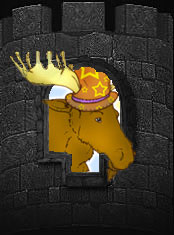5 casts in a row resisted has a 20% chance, because every cast has a 20% chance. :\
You can't count chance to resist a spell based on your previous success. The chance of me flipping heads because I flipped 4 previous tails does not change. It's still 50%.
Unless I'm missing something.
You can't count chance to resist a spell based on your previous success. The chance of me flipping heads because I flipped 4 previous tails does not change. It's still 50%.
Unless I'm missing something.


